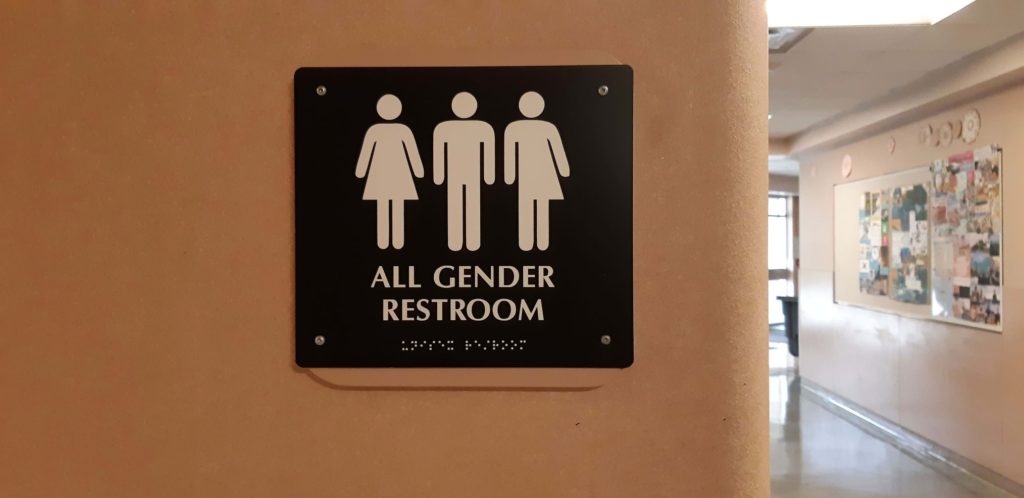
Ever wondered why Vim advertisements mostly feature women and Maruti advertisements men? The imaginary walls we build, demarcating territories for different genders is what I call the ‘gendered walls’. Most of us encounter gendered walls on a daily basis. Often these walls are so thoroughly ingrained in our psyche to a point where we avoid certain spaces unconsciously. Hence many a times a slight transgression, like soft wind blowing to a proscribed area, topples the giant house of cards built on customs and traditions. We have seen and read and experienced these ‘walls’. In the acclaimed short film ‘Juice’ (2017) ‘Manju Singh’ played by Shefali shah, walks to the front room holding a glass of juice, treading long discourses that confined women to the kitchens and men to the living rooms. Popular literary works such as ‘A Room of One’s Own’ by Virginia Woolf and ‘I Want a Wife’ by Judy Brady have already exposed the fault lines of men’s and women’s spaces. This article seeks to explore how we create gendered spaces and how they, in turn, reinforce the stereotypes.
Feminism, the movement that advocates gender equality, has been fraught with debates that challenged the association of spaces with gender. One of the most prominent ones was the public versus private debate that reigned the discourses on feminism for a very long time. Women have been traditionally associated with the private sphere and men with the public sphere. In the 1970s, Sherry Ortner developed ‘nature’ versus ‘culture’ dichotomy to explain the universal secondary status of women. Ortner talked about how a woman’s body, due to its capability of reproduction, is closer to nature and how men’s activities, transcendental in nature, is closer to culture. Likewise, there have been arguments and counter-arguments, associating and dissociating different genders with different spaces.
Renowned American anthropologist Edward T. Hall, in his book titled ‘The Silent Language’, studied the implied meanings of physical spaces. ‘Spaces’, according to Hall, is one of the “silent languages” used by human beings to transmit messages. Daphne Spain is one of the first scholars to have studied about gendered physical spaces. Spain writes in an article titled ‘Gendered Spaces and Women’s Status’ (1993), “Both spaces and institutions are socially constructed. The houses in which we live and the buildings in which we learn and work reflect assumptions about proper relations between family members, colleagues, and strangers. Those buildings, in turn, shape the occupants’ behaviour.” A side glance into our surroundings would give us enough examples to substantiate this fact.
The most obvious example can be picked up from our families. The taboo associated with menstruation has denied women access to numerous spaces. For a very long while menstruating women were confined to dark dungeons called ‘Menstruation Huts’. The ‘impure’ women were forbidden from kitchens and from religious worship.
The area of religious worship is yet another area demarcated with strict gendered-walls. While the Sabarimala Court verdict was regarding ‘Smashing Brahmanical Patriarchy’, it was also about giving access to a religious space for a particular gender. The 2016 Bombay High Court order lifting ban on women’s entry from Shani Shignapur Temple is another example. At the same time there are rituals from which men abstain due to the age-old traditions. For example the ‘Attukal Pongala’, the world famous 10-day festival conducted in ‘Attukal Temple’, is exclusively for women. Thousands of Mosques across the country deny access to women inside. It is interesting to note that this segregation is practiced when the holy places of Mecca, Mount Arafat and Medina, give unrestricted access to men and women alike. The Malankara Marthoma Syrian Church, a minority in Christianity, denies women access to Madbaha (or sanctum sanctorum). Not to go unmentioned is the full-fledged conservative Christian discourse on homosexuality being a sin. Let alone a few circumstances, LGBTQ communities are yet to find even an entry to the discourses on gendered religious spaces. The discourses on gendered physical spaces are restricted to men and women spaces, LGBTQ communities are added to these discourses, if at all they are added, as an afterthought.

One of the other easily identifiable examples is the blue and pink dichotomies of public restrooms. We once had an exercise in college to bring self-clicked thought-provoking photos to class. One of the photos displayed in the class was that of a transgender person staring at signs in front of a public rest room written in blue and pink indicating male and female. Access to clean sanitation facilities is a basic human requirement. In 2014, the Supreme Court of India officially recognized ‘third gender’ in our country which also includes the right to have separate washrooms. How many of us have actually come across one? The answer points to the direction of the need to possess certain contemporary gender keys to open some conventional locks.
The institution of marriage is yet another area ridden with layers of inequality and conditioning. As Nivedita Menon puts it in ‘Seeing Like a Feminist’, the marriages in India are “Patriarchal Patrilineal and Virilocal” in nature. This is almost like uprooting and planting a sapling elsewhere, in a completely different surrounding with no support system to fall back on. Whether you would have a chance to reconnect with your family and friends solely depends upon your fortune. This physical displacement that befall women in their twenties force them to build their life from scratch.
The LGBTQ community has been denied physical spaces for a very long time. Being thrown out of one’s house or being thrown into a room are so common that they have become tropes in movies. The interesting and positive change is the increasing representation the community gets in virtual space these days. Bollywood has seen different queer representations since 2014 like “Margarita with a Straw” (2014), “Angry Indian Godesses” (2015), “Aligarh” (2015), “Kapoor & Sons” (2016), “Shubh Mangal Zyada Savdhan” (2017). Though mostly stereotypical, these initiatives can be regarded as baby steps. The interesting fact here is how we, over a period of time, have become comfortable with queer presence in virtual space but still not in actual physical space. While they are playing main roles in movies and series, their existence still gets questioned in hostile physical spaces.
The entire discussion on gendered physical spaces boil down to the power equations in the society. Who gets to control the access to the physical spaces around us? What are the stakes involved in the customs and traditions that confine or bind us? More importantly what is it that we lose by making our spaces more inclusive and diverse? Day by day we go on erecting gendered walls confining ourselves and others to separate alienating spaces. Taking them down, one by one, would give us boundless freedom to explore what was till date unexplorable. This is an attempt to implore one to think- wouldn’t it be worthwhile to strive for a world where Mithali Raj, the Indian women’s cricket team captain, Eshan Hilal, a budding male belly dancer and Dr.Manabi Bandhopadhyay, India’s first openly transgender college principal, would not have to jump ‘gender hurdles’ to reach their dreams.

